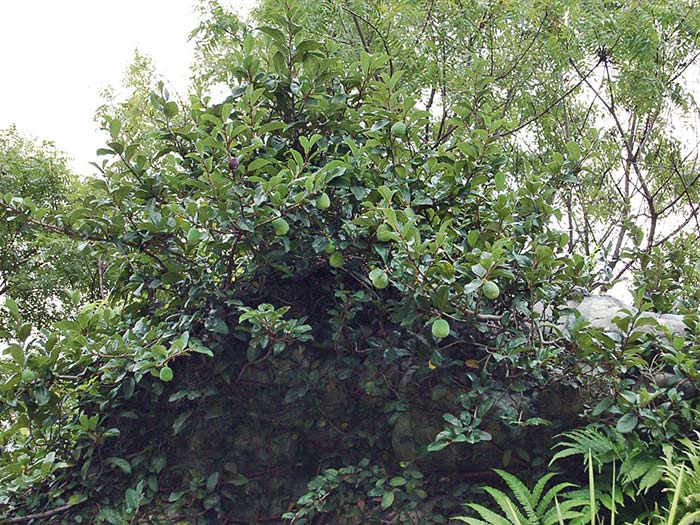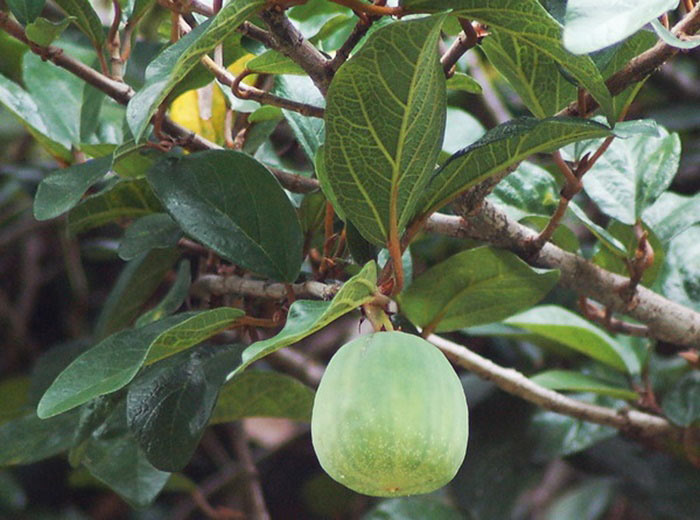Ficus pumila
The climbing fig is found in China, Southeast Asia, India, Japan and Taiwan, and can be found at low altitudes throughout the island of Taiwan. It is common to see it use adventitious roots to attach itself to the trunks of other trees or the walls. The English name climbing fig reflects its ability to climb, with shade tolerance and the habit of climbing upwards. The plant grows quickly and is easy to shape, so it is often cultivated as an indoor ornamental plant. In urban areas in Taiwan it is often used to climb on the walls and is an excellent landscaping plant. It is planted on the rock wall of the waterfall in front of the special exhibition room of the Botanical Garden, and on the wall of the Plant Evolution Garden in Life Science Hall, as a landscaping plant.
When people hear the climbing fig, they will associate it with a small potted plant with small round thin leaves and complete defoliation if lack of water. They often can not believe it is the same species when they know that the climbing fig planted by the museum have thick leaves as large as eggs. In fact, the potted climbing fig plants people have bought are usually young plants, and in order to maintain the ornamental properties, the traders often use various methods to make it unable to grow, which is why we always do not see potted climbing fig flowers and fruits.
The most attractive feature of the adult climbing fig is its rounded plump fruits. However, those bulbous things are not necessarily fruits but they might be the inflorescences. Most people have not seen the flowers of the climbing fig because they are very small. The entire inflorescence is wrapped up by the thickened and enlarged receptacle, leaving only a small hole for the specific fig wasps to come in and pollinate the flowers. This kind of inflorescence is called “hypanthodium” and that fruit-like thing has a special term called “synconium,” which is a common feature for the genus Ficus. There is a very interesting symbiosis between the climbing fig and the fig wasps.

